What role do sensory solutions have in de-Escalating behaviour & Increasing participation?
Learn why Sensory is the Key to Engagement Today!

**************************************
Join me for an upcoming Workshop:
Can't make these Workshop dates? Join me for a self-paced on-demand course:
Sue Larkey On-Demand Workshops
**************************************
Join me on 2nd August for Free Webinar! REGISTER BELOW
(TOPIC – The Often Overlooked Causes of Behaviour in Your Classroom (Sensory))
Discussed in this Episode:
✅ Simple Classroom Adaptations That Make a Huge Difference to students and YOU
✅ Do you know what to look for to Recognise SPD?
✅ Busy Classroom Teacher Strategies to help Students Self Regulate
✅ 8 Warning Signs of Slow Processing Speed – Plus What Simple Modifications & Strategies to Help
✅ Why Do They Do That? 12 Common Behaviours Explained & Strategies to Try
✅ 3 BIG Barriers to Participation Every Educator needs to Rule Out
✅ Heaps of Resources and Sensory Tools
✅Understand why Sensory is the Key to Engagement!
Free E-Book with over 100 Tips & Strategies
- Teaching in a busy and complex classroom can be very difficult, but this term I have collated my top Proven Sensory Strategies to increase engagement and participation. A sensory focus is crucial to maximise class engagement, as well as to understand the often overlooked causes of behaviour
In this Free E-Book – Sensory Strategies for Educators to Increase Engagement in a Busy & Complex Classroom
- What Role do Sensory Solutions have in De-escalating Behaviour & Increasing Participation?
- Benefits of a Simple Sensory Programme in your Classroom
- What is SPD?
- How to Identify Students who could have SPD
- Checklist to Identify Underlying Sensory Causes of Behaviour
- The MOST Overlooked Sensory Tools & How to use
- Quickfire Solutions to Implement this Week

Join Me For MY FREE live Virtual Webinar
PLUS Join me for FREE Live Virtual Webinar
– 1 hour of power
on Wednesday 2nd of August 2023
Join me for: 1 HOUR OF POWER 4:00 – 5:00PM (AEST)
Replay Available: If you can’t make it on the day, make sure you still register so you can watch the replay on-demand
Sue Larkey Authored Books
-
Practical Sensory Programmes
$71.95 -
Practical Communication Programmes
$44.95 -
Teacher Assistants Big Red Book of Ideas
$39.95 -
The Essential Guide to Secondary School
$44.95 -
Tips for Toileting
$29.95 -
Making it a Success
$47.95 -
Teacher Assistants Big Blue Book of Ideas
$39.95 -
The Ultimate Guide to School and Home
$44.95 -
RED and BLUE BOOK BUNDLE
$75.00 -
Practical Mathematics
$44.95 -
A Manual To Provide Support and Care for Adults with Autism Spectrum
$39.95 -
Sue Larkey’s MEGA BOOK of Timesavers, Tips & Strategies for Busy and Complex Classrooms
$49.95
UNDERSTANDING AuDHD: Teaching & Supporting Students with Autism and ADHD Co-occurrence
✅ 2 Hours, 8 Lessons
✅ 6 Weeks to Complete 🎁 Bonus 6 Months Access (available until 28 Oct 25)
✅ Certificate of Completion
✅ Lesson Transcripts
 2 Hours
2 Hours

$149

# Sensory strategies for classrooms
## Signs Up For Free Webinar
[00:00:00] Sue: Well, welcome everybody. I am super excited today because I’ve finally set a date for my free live webinar. This term, it’s from four till five on Wednesday, August the second. Now remember, you can sign up for the replay or to join me live. I would encourage you to join me live because it’s interactive, fast-moving people who come.
[00:00:22] Absolutely love it. Last year, this was one of my most, popular webinars. This is the often overlooked reason for the behaviour. This is the stuff I wish I’d learned 30 years ago. In fact, it underpins my master’s and my doctorate. It’s such important information, and I know it’s gonna make the world a difference to you and the children.
[00:00:42] You know, as always, I’m gonna have prizes and lots of giveaways on the day. And if you sign up for the replay, you can. Still, go in a draw to win. I’ve got some new things to give away, which is always fun. So I really would encourage you to grab your diary out now [00:01:00] and put Wednesday the 2nd of August in and the replay.
## Importance of Understanding Sensory Needs
[00:01:03] If you can’t join me live, maybe put a note in your diary when you’re gonna watch it that weekend because procrastination is, you know, it’s so easy to go later. But I promise you that hour is gonna save you a lot of time and stress understanding the things you can put in place for children.
[00:01:20] So one of my favourite sayings is it’s easier to change the structure. Then change the child. And one of the bigger structural changes is sensory, understanding the child’s over-under reactions to their sensory needs, which is all the stuff I learned from occupational therapists when I worked in a special school.
[00:01:38] But I didn’t learn any of that at uni. So I’m gonna give you the tips and strategies that. I think I would make a world of difference. So I’m gonna go through all of these things, but I like this quote from Temple.
[00:01:59] My nervous system was all hyped up. Like it was a jungle full of dangerous animals for no reason. How can you socialize if the environment is hurting you from a sensory standpoint? And then she says, once a kid’s got sound sensitivity, another one can’t tolerate fluorescent lights. I can’t stand scratchy clothes.
[00:02:19] In my experience, many children need sensory adaptions in the classrooms. So, oh, sorry, this is me talking now. Not temple. Simple changes in the environment can make a big difference to children’s engagement and learning outcomes. You could spend all day asking the child to sit still on the [00:03:00] mat or give them the sensory mat to sit on. That helps them sit still.
## Calming vs Alerting Activities
For the rest of the book, we’re gonna go through a lot of sensory tools and supports to make a difference. So I’m gonna go through all of these things, but I like this quote from Temple.
[00:03:15] My nervous system was all hyped up. Like it was a jungle full of dangerous animals for no reason. How can you socialize if the environment is hurting you from a sensory standpoint? And then she says, once a kid’s got sound sensitivity, another can’t stand. Fluorescent lights. I can’t stand scratchy clothes.
[00:03:35] So I think I recommend you download the book because it goes through so many things that people don’t realize are sensory. Now I know there’s a lot of conjecture, and this has sensory pro autism spectrum disorder. A s d in this book. And it’s funny, I was talking to Kay Alani, who I wrote the Red Beast workbook with, and I’m super [00:04:00] excited.
[00:04:08] Calming activities. Might be a massage sitting on a bean chair, slow rocking, soft, slow music, joint compression, stretching, chewing, sucking range of, you know, fidget activities or squeezing a stress ball, whereas alerting activities. It could be rubbing, you know, using like the tiger brushes I have, or allowing a child to have a chewy break or a chewy stick.
[00:04:34] Alerting activities can be actually doing pushups, skipping, running, hopping, sco, lifting, or something heavy. Maybe even bouncing a ball, swinging, jumping on a trampoline. It might be kicking, bouncing, throwing a ball. It could actually be giving the child something strong to taste a strong flavour, which is some of our chewy activities.
[00:04:56] Actually, you know, chewing gum for some of my children, [00:05:00] loud and fast music. It could be fidget toys; it could be sitting on a cushion or physical exercise. Now, are any of you going? What about the other kids? Please make sure you join me for the webinar. We’re gonna cover that in the webinar cuz that is always the number one thing.
## Slow Processing Speed Strategies
[00:05:14] Now, on page five, I love this quote from Temple Grandin. She says they’re like a phone with one bar service. You have to give them time to download the image. Now, I don’t think it’s just downloading the image; it’s also the words. So this is about slow processing speed and the modifications you can put in place for some of my children.
[00:05:40] This is why I say you can’t flash up visuals and take them away. Visuals are so important because they support the words that we use, and words disappear. Visuals can be referred back to, but remember, visuals need to be left up too, but also, if people are visual thinkers like Temple Grandin, when you’re saying [00:06:00] words, she needs to come up with the visuals in her mind.
[00:06:11] So when I created the course with her, and I hope you’ve done the course. If you haven’t, I’m gonna be talking about the course. I think in another two episodes time, the webinar will be available on how to extend and stretch children. That Temple Grandin course is my, honestly, I love that course.
[00:06:27] It was my favourite one. I created it having Temple’s lived experience, and also, she’s like my hero. And then actually explaining how to use the information is invaluable. So make sure you keep an eye up for that podcast when it drops. In fact, subscribe to my podcast so it just pops up in your podcast, and you’ve got it there when you’re looking for something to listen to.
## Misophonia and Eating at School
[00:06:50] Anyway. With Temple. She talked about; she talked in the course about the importance of understanding the child’s slow processing time. I would love you over the next week to just stand back and watch what I find with [00:07:00] processing time. Often it’s a look in their eyes. I can tell when they’re processing and when they’re thinking.
[00:07:05] And other times, I can tell that look means they’re actually anxious, or the look may mean. I am actually trying to self-regulate. So keep an eye out for that. But this is about slow processing. So the question I ask is, have you noticed any of these signs in the children?
[00:07:18] On mis phobia, which is why many of my children do not eat at school. This is they, the sound of people crunching chip packets, opening the sound sensitivity, but it’s a whole nother nervous system reaction. It is like, Can cause a meltdown and so many of my children actually will not eat at school for the fear of that sound of that noise of [00:08:00] other people drinking, eating, crunching.
[00:08:02] Each child’s very different parents. If you know your child has mis phobia, please talk to the school about what your child might need to eat. I like to send them out for a walk and eat rather than eating around other people. It’s very important.
## Favorite Sensory Tools
And then I have some of my favourite sensory tools, so there is a little twisty man key ring. For children who like that constant movement, I like to put on their pencil case so that if they’re having to sit at their desk in the older years and listen to instruction, they’ve got something in their hands to twist the wooden hand massages, which are my fa thing.
[00:08:25] So these are great in pockets for children who like deep pressure, they can rub them. Or some of my ADHD kids like to roll the ball. They used to be at the body shop many years ago. But they’re not available there now. So have a look. I’ve got my favourite smiley face stress ball. Oh, here’s my cat joining me. She [00:09:00] always loves to join me for these. Podcasts, even though I shut the door, I don’t know how she snuck in.
[00:08:21] As I say, have a look at the feedback. I’ve put it up on the website now. So click on the workshop you want to go to, and you’ll see the reviews. If you’re not sure if it’s for you or maybe your boss isn’t sure if it’s for you, show them some of the reviews. I think they’ll be like, wow, you know, let’s do it anyway.
[00:08:37] I can’t wait to see you and connect with you and just. Give you the confidence to support the children, you know, and give you all the tips and strategies I wished I had 30 years ago. I mean, I just wish I’d had this stuff, and you could spend hours Googling or come along for five hours and learn lots of [00:09:00] tips and strategies and even just the reassurance you’re on the right path.
[00:09:03] So, let me get into this week’s podcast, which is the ebook. So if you haven’t already downloaded it, I highly recommend you download the ebook so that you can refer back to it and read along as we go. So this is all sensory strategies for educators to increase engagement and participation. But parents, this is really helpful for you to talk to your educators about.
[00:09:29] I mean, remember, for a three-year-old, understanding that child’s sensory needs are massive. But for many of you in secondary, some of your teenagers, when they hit puberty, some of their sensory changes, you know, when your hormones are racing around, your body changes. Often we need to go back and look at sensory.
[00:09:48] Some of my children become more sensory sensitive. Some of my children’s sensors become confused. I remember when I worked with OTs in specialist schools, they often had to do a new assessment when a child hit [00:10:00] puberty because their body changes, they’d got taller. And a talisman son, Daniel, started bumping into things because he’d lost that, where his body was in space with that quick growth spurt.
[00:10:11] So worth thinking about. So, The start of this ebook, I just wanna read it to you. And as you know, I don’t really like reading out loud. Maybe this is where I need to get a robot chat, g p t to read out loud. So I’m gonna put my reading out loud, voice on, as my children would say when I used to read them bedtime stories.
[00:10:29] So, Many children with autism spectrum disorder will be over or underactive to sensory stimuli, including touch, taste, smell, sound, light, and or movement. By regulating the amount and intensity of stimulation, it helps to keep the nervous system calm. Organized and focused children can be under aroused and sluggish, one moment, and overwhelmed and anxious the [00:11:00] next meeting.
[00:11:01] Sensory needs can include using sensory tools to regulate behaviour or adapting activities to reduce sensory stimulation, for example. Some children can sit for longer periods with a sensory tool or fidget, while others may need clothing, adaptions socks with no overlooking for them to wear. Temple Grandin, an adult with a s d, advocates for awareness of different children having different sensory needs.
[00:11:29] She encapsulates this difference by stating. One kid’s got sensitivity. Another one can’t tolerate fluorescent lights. I can’t stand scratchy clothes. In my experience, many children need sensory adaptions in the classrooms. So, oh, sorry, this is me talking now. Not temple. Simple changes in the environment can make a big difference to children’s engagement and learning outcomes.
[00:11:55] You could spend all day asking the child to sit still on the [00:12:00] mat or give them the sensory mat to sit on. That helps them sit still. For the rest of the book, we’re gonna go through a lot of sensory tools and supports to make a difference. So I’m gonna go through all of these things, but I like this quote from Temple.
[00:12:15] My nervous system was all hyped up. Like it was a jungle full of dangerous animals for no reason. How can you socialize if the environment is hurting you from a sensory standpoint? And then she says, once a kid’s got sound sensitivity, another can’t stand. Fluorescent lights. I can’t stand scratchy clothes.
[00:12:35] So I think I recommend you download the book because it goes through so many things that people don’t realize are sensory. Now I know there’s a lot of conjecture, and this has sensory pro autism spectrum disorder. A s d in this book. And it’s funny, I was talking to Kay Alani, who I wrote the Red Beast workbook with, and I’m super [00:13:00] excited.
[00:13:00] How many of you have now got that book and giving me amazing feedback? So thank you for that. It really was a passion project to do with Kay. And with the time difference to the UK and things. So I’m super excited cuz I love the Red Beast work picture book, and to work with Kay to create really what, how I’ve used the book in the classroom and how she’s used it is super exciting.
[00:13:22] But it’s interesting. She was saying to me when Ham got all diagnosed, she found the word. Disorder in autism spectrum disorder. Really helpful as a parent, and I’d never thought of it like this, and this is why I find it so helpful to talk about lived experience, but also parents lived experience of getting a diagnosis and what it’s like.
[00:13:43] So with Ham, what she said, she found the word disorder. So helpful because Ham is, has always been an amazing draw and he used drawing to communicate and to illustrate from a, and to communicate from a very young age he could do these amazing illustrations and [00:14:00] drawings, which you know, have gone on to be his career.
[00:14:03] But he couldn’t do simple things. Or if she went like simple things like, you know, doing up his shoelaces, but yet he could do amazing drawings if she walked a different way to the shops with him in his pushchair, as they call it in the UK. He would get anxious if there was a change of routine. So she likes the word disorder because it’s not a delay.
[00:14:25] It’s actually disorder. And I thought that makes a lot of sense. I can ch have children who can read but can’t comprehend. I can have children who, you know, can do a jigsaw puzzle but can’t do an insert puzzle. I can have children that can count. But not understand numbers, so that makes sense why.
[00:14:45] Originally, we used the word disorder. I mean, I agree, I like the word condition or autism spectrum, but I guess I thought it just gave me a new perspective, and I’m always learning, and I just wanted to say that. And so I was gonna get rid of when I revise this book, the As D, and then I [00:15:00] thought, no. I get what Kay’s saying.
[00:15:02] It makes sense why some of my children are really good at math but struggle with English, you know, for secondary school teachers listening, why a child’s learning can be disordered. So maybe as educators, we have to understand that word disorder is not a disorder in a negative way, as this explains why one child.
[00:15:24] Can have amazing gross and fine motor skills, and another child doesn’t. You know, that explains that. Anyway, I wasn’t gonna spend ages on that, but I just wanted to mention that to you. So back to the book, on page three, there are 11 common signs of sensory processing disorder or difficulties. So remember autism and back to diagnosis, autism spectrum.
[00:15:46] Sorry, sensory processing disorder. There’s conjecture around that language too, but let’s call it difficulties number one. Extra sensitive to touch. They don’t like to be touched or can’t be touched enough. [00:16:00] So one of my children will love, touch, and another will hate. Touch. Number two is sensitivity to sound.
[00:16:06] They may cover their ears when the same noise as. Don’t bother others. You know, not all children are sound-sensitive, picky eaters, and I know some people don’t like the word picky eaters, but I did a great podcast on that about fussy eaters and picky eating, but they’re the words parents relate to.
[00:16:25] They’re the words that parents hear. We understand it’s far more complex than that, and some children have an Alfred and all of these things. But knowing that this child mightn’t eat a range of food, as an educator, this is important. If you do crunch and sip and children are meant to only have fruit and vegetables, this child might need an adaption there.
[00:16:44] You might need to be allowed to have barbecue shapes or dry noodles. Or one of my little boys, Ricky Nutragrain. Crunch and sip is about giving children that food break. Well, what does this child need? If they need specific food, make sure [00:17:00] they have it. But then I have other children who eat everything.
[00:17:03] So, being aware of that. Number four, movement. Unusual body posture, constantly moving or actually having difficulty with movement. So I have children who can’t walk upstairs to children who run and climb on everything. Number five is that hyperactivity for children who can’t sleep still. And they’re often, my children have trouble with sleeping, and I’ve got some sleep hints later on in this.
[00:17:27] I was listening to a really interesting podcast the other day. I don’t even know; it was just one of those ones that came up when I was driving, and it was about, it wasn’t even to do with, you know, most of my podcasts are do with education, autism, so forth. It was just a random podcast, and it was about the incredible importance of sleep and the restorative nature of sleep.
[00:17:47] So, For many of my children who have never had a good night’s sleep, that impacts on their sensory as well. Cuz thinks of yourself if you are tired. Are you more sound sensitive? If you are tired? I don’t know when I’m [00:18:00] tired, I’m hungrier, but I dunno what I feel like eating. Like, think of yourself. How does tiredness impact on your eating?
[00:18:07] Are you? Do you stop eating? Some people actually stop eating when they’re hungry. You know, are you hungry, angry? So have a think about that. But the sleep, that’s so interesting, and I think we need to be aware that for so many of our children, they struggle with sleep. I have tried to try to sleep on many occasions with parents, educators, and psychologists, and I’ve got nowhere with that book because te sleep is such a hard thing to make somebody sleep.
[00:18:35] I dunno how you do that. And everyone is so different with their sleep. Some children can go straight to sleep. Some wake up in the middle of the night. So I don’t know. I wish I could help with that. Elusive sleep. I’m sure that there are many of you who know what I’m talking about. Fine, gross and fine motor skills.
[00:18:54] Obviously, some children have trouble with fine motor. Avoidance of sensory [00:19:00] simulation, so they won’t do the messy. Those of you in early childhood will see this, where they won’t do the finger paint and the messy activities. Trouble with balance. My children are accident-prone; I remember a parent going to the doctor, and her son was covered in bruises; she was so embarrassed because he had just bumped into everything before his diagnosis.
[00:19:19] And easily distracted and remember, distraction can be noise, movement, touch. It can be a range of things. So I highly recommend you have a little look at that checklist. And in the webinar where I’m actually gonna give you a proforma to fill in for the children at the individual child so that you can think about what is the issue, what is the issue for this child, and what are the sensory things we could think about understanding individually for that child.
[00:19:47] Now, in The Kids’ Guide to Being Awesome, which is the book I love by Lauren Brener that talks about children. Some children need calming activities, and some children need alerting activities. So what I’ve put [00:20:00] in the ebook is 10 of Lauren’s calming activities and 10 of her alerting activities. So calming activities.
[00:20:08] Might be a massage sitting on a bean chair, slow rocking, soft, slow music, joint compression, stretching, chewing, sucking range of, you know, fidget activities or squeezing a stress ball, whereas alerting activities. It could be rubbing, you know, using like the tiger brushes I have, or allowing a child to have a chewy break or a chewy stick.
[00:20:34] Alerting activities can be actually doing pushups, skipping, running, hopping, sco, lifting, or something heavy. Maybe even bouncing a ball, swinging, jumping on a trampoline. It might be kicking, bouncing, throwing a ball. It could actually be giving the child something strong to taste a strong flavour, which is some of our chewy activities.
[00:20:56] Actually, you know, chewing gum for some of my children, [00:21:00] loud and fast music. It could be fidget toys; it could be sitting on a cushion or physical exercise. Now, are any of you going? What about the other kids? Please make sure you join me for the webinar. We’re gonna cover that in the webinar cuz that is always the number one thing.
[00:21:14] Now, on page five, I love this quote from Temple Grandin. She says they’re like a phone with one bar service. You have to give them time to download the image. Now, I don’t think it’s just downloading the image; it’s also the words. So this is about slow processing speed and the modifications you can put in place for some of my children.
[00:21:40] This is why I say you can’t flash up visuals and take them away. Visuals are so important because they support the words that we use, and words disappear. Visuals can be referred back to, but remember, visuals need to be left up too, but also, if people are visual thinkers like Temple Grandin, when you’re saying [00:22:00] words, she needs to come up with the visuals in her mind.
[00:22:03] So when I created the course with her, and I hope you’ve done the course. If you haven’t, I’m gonna be talking about the course. I think in another two episodes time, the webinar will be available on how to extend and stretch children. That Temple Grandin course is my, honestly, I love that course.
[00:22:22] It was my favourite one. I created it having Temple’s lived experience, and also, she’s like my hero. And then actually explaining how to use the information is invaluable. So make sure you keep an eye up for that podcast when it drops. In fact, subscribe to my podcast so it just pops up in your podcast, and you’ve got it there when you’re looking for something to listen to.
[00:22:45] Anyway. With Temple. She talked about; she talked in the course about the importance of understanding the child’s slow processing time. I would love you over the next week to just stand back and watch what I find with [00:23:00] processing time. Often it’s a look in their eyes. I can tell when they’re processing and when they’re thinking.
[00:23:05] And other times, I can tell that look means they’re actually anxious, or the look may mean. I am actually trying to self-regulate. So keep an eye out for that. But this is about slow processing. So the question I ask is, have you noticed any of these signs in the children? You know, Unorganized often forgets or losers or forgets homework.
[00:23:27] Rarely completes test on time and leaves multiple questions unanswered in timed activities or exams. Can’t perform simple mass problems, sequences or calculations. Turns in incomplete co homework because they don’t understand the instructions. Need a quiet area to study and is often distracted by.
[00:23:48] Background noise lacks focus when reading and taking notes. Tries to avoid multiple set problems and needs extra time to make decisions. All of these would tell you this child [00:24:00] needs different supports that the current supports have set up for neurotypical children, and we need to adjust for our children with neurodiversity and particularly our children with sensory processing.
[00:24:11] Often, this has to do with processing speed, but for some of our children, it’s visual processing, and for some, it’s auditory processing. Some of our children take longer to actually think things through, so. I would recommend having a look at all the ideas I’ve got in these pages on pages six and seven. I’m not gonna read them out, but it also has some strategies to try at home.
[00:24:36] There are some great ideas to help put in place visuals, teaching ideas, classroom tips, like. Allowing extra time. Actually, getting them, giving, encouraging the student to answer questions in class and checking in with them more. Just lots of simple and short ideas, you know, keeping things short and sharp.
[00:24:58] And those of you who have done my [00:25:00] workshops, you know, this is the GPS. Stuff. What can you do to make your instructions clear and concise? Like your GPS? It doesn’t overwhelm you with a hundred instructions. And then I’ve got a couple of pages. They’re not all sensory, but I thought it was quite handy. It was behaviour.
[00:25:16] Why do children do that? Solutions and strategies for common classroom behaviours. Now, some of them are sensory, some are not, but I just thought it was a really interesting one, like chewing on a hat. String or objects hiding and running away. See, some of those children actually need a preventative break.
[00:25:33] It’s actually when they’re hiding and running away we need to give them more breaks. And I’m gonna be talking about those breaks in the webinar. Difficulty accepting criticism. A lot of my children actually fear of making mistakes because their perfectionism is around their anxiety, and that anxiety can be sensory-based, which is why in the Red Beast Workbook we’ve included.
[00:25:56] Part of anger comes from sensory. You must [00:26:00] understand emotional regulation and sensory regulation can be connected. Remember, if you’re hungry, you can be angry, so don’t forget that. I’m swearing. See, in The Red Beast, we’ve got a great thing about using swear words and hard words is a great activity. Make sure you have a look at that.
[00:26:18] Kay taught me that activity, and I just love it. Love it. But some children actually I. Like the sound of swear words. They like the the, like the, they like the saying the words over and over again. And that can be a stim, which can be sensely calming. So being aware of that, not wanting to leave a special interest.
[00:26:39] You know, some of my children, this is when they’re happy. What Dean Beetle causes autistic joy. For some of my children, this is the only time they feel calm and in control. You know, temple Grande would get in that squeeze machine, which was her special interest, while finding, inventing that squeeze machine to give herself the deep pressure.
[00:26:58] When she was younger, she [00:27:00] used to love to watch her coin spin. These are all sensory-seeking activities. Often what brings a child joy or their special interests? They are actually sensory, and it helps them regulate and engage for longer. Dean Beetle would say, if you gave me a five-minute break, you’d get another 20 minutes of work from me.
[00:27:17] Very important to understand what is that child’s break. Do they need the quiet and calm, or do they actually need the sensory movement and stimulation and carrying heavy things? I’ve got in here sniffing other children because some of my children actually love sniffing. Some of my children hate the smell, but some of my children actually love sniffing things, and they actually seek that out.
[00:27:41] I know when Lawson used to talk in their speech, they talked about her; sorry, they’ve changed gender since I heard them speak about this. There is a need to sniff people and objects, and the importance of that. Sorry, I got all my pronouns all muddled up there. This is why I [00:28:00] should write down, not to sit and have a coffee with you.
[00:28:02] Excuse me. So when Lawson is now he. Him. So I apologize if you’re listening when, but when many years ago told these great stories about how when he was in line that someone in front of him would have on a woollen jumper that was washed with eucalyptus, he couldn’t help but lean in and smell it because he just loved that.
[00:28:25] But it was actually the calm smell. And I found that incredibly helpful cuz I had a little boy who used to love sniff people. So we just put that smell he loved on a handkerchief so he could smell that smell. So he had. Ctor that smell rather than smelling people. But that smell was very calming. And if you think years ago, you know, smelling salts and things like people have used sniffing for years to regulate.
[00:28:47] And then I’ve got that constant thirst, toileting the eating and so forth. So have a look at those. But then I go to page 14 to remember the underlying cause of the behaviour. Could [00:29:00] be toilet drink, thirsty, and tired. And then I’ve given you some great strategies around some ideas to try around sleep.
[00:29:08] But as I say, I haven’t got a full-proof one, but I was interested. I asked on my Facebook Do the kids with A S D A D H D O D P D SBA have difficulty staying asleep or going to sleep? 27% said staying asleep. 73% said going to sleep. So isn’t that interesting? And this, think of how that can impact on you.
[00:29:33] So I’ve got 16 great tips for sleep. When Lawson hated the f hates the feeling of skin on skin. So even in hot weather, he needs to wear fully covered pyjamas with socks on. So no skin is touching any other part of his skin. So isn’t that interesting? Then I’ve got a section on interception, which is so important.
[00:29:57] That is, remember, many of my children don’t know they’re [00:30:00] thirsty, need the toilet, don’t know they’re hungry. They may not recognize that need to go, which is why I personally think we need to think about routines around that. Think of yourself. Do you have a routine and go to the toilet before you leave the house?
[00:30:16] Yes. We’ll put that routine in place. Don’t expect this child to remember to go because their body often doesn’t send the signal until it’s too late. I’ve also got a very important part I want all of you to read on page 18. This is called on mis phobia, which is why many of my children do not eat at school.
[00:30:37] This is they, the sound of people crunching chip packets, opening the sound sensitivity, but it’s a whole nother nervous system reaction. It is like, Can cause a meltdown and so many of my children actually will not eat at school for the fear of that sound of that noise of [00:31:00] other people drinking, eating, crunching.
[00:31:02] Each child’s very different parents. If you know your child has mis phobia, please talk to the school about what your child might need to eat. I like to send them out for a walk and eat rather than eating around other people. It’s very important. And then I have some of my favourite sensory tools, so there is a little twisty man key ring.
[00:31:25] For children who like that constant movement, I like to put on their pencil case so that if they’re having to sit at their desk in the older years and listen to instruction, they’ve got something in their hands to twist the wooden hand massages, which are my fa thing. So these are great in pockets for children who like deep pressure, they can rub them.
[00:31:45] Or some of my ADHD kids like to roll the ball. They used to be at the body shop many years ago. But they’re not available there now. So have a look. I’ve got my favourite smiley face stress ball. Oh, here’s my cat joining me. She [00:32:00] always loves to join me for these. Podcasts, even though I shut the door, I don’t know how she snuck in.
[00:32:06] So good news, I have finished sharing. There are also a whole lot of books in there and resources on the back page of the ebook or all the dates for the upcoming workshops, plus information on the online on-demand courses. So I hope you can join me soon, either face to face for the live free webinar, hour of power.
[00:32:26] Wednesday, August the second. I can’t wait to see you soon. I know it’s gonna be jam-packed with strategies to make a difference to you and the children, you know.

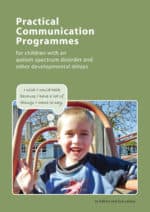
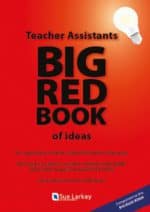
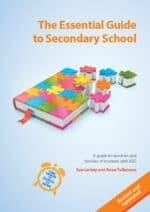

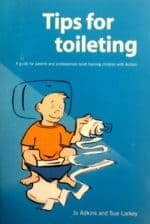






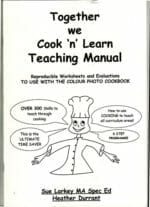

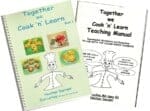

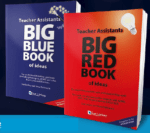



 2 Hours
2 Hours


 Sorry we no longer ship items outside Australia. Please consider the digital versions of Sue’s Books –
Sorry we no longer ship items outside Australia. Please consider the digital versions of Sue’s Books – 